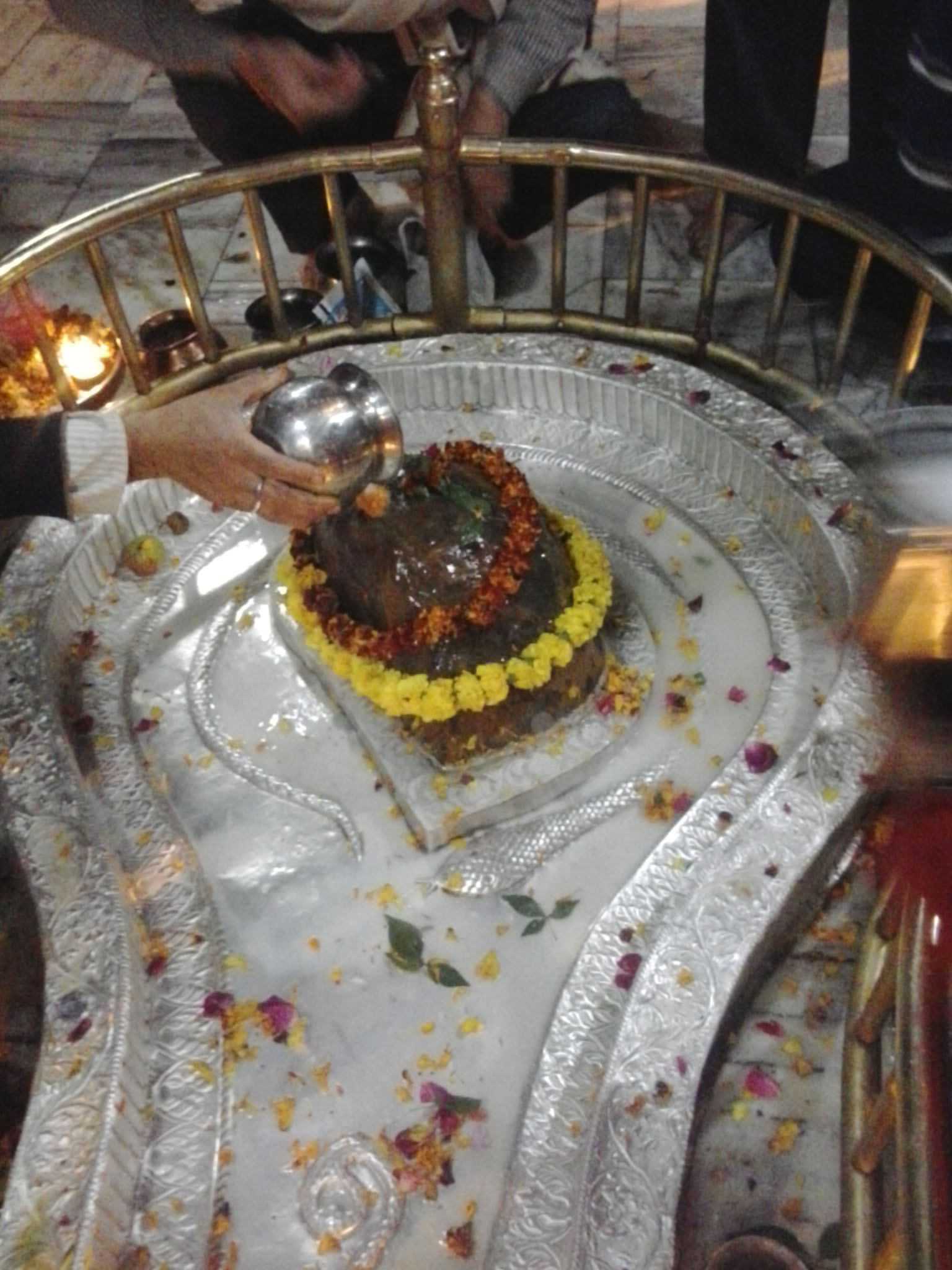Lalit Gupta
The Aap Shambhu Temple at Sathrian (Roop Nagar), as the name indicates, is one of the few shrines in Jammu city where Lord Shiva appears as self-manifested Shiva Linga. Transformed within last sixty years or so, from a remote, obscure and humble shrine to its present day elaborate architectural presence, this Aap Shambhu temple for its immense popularity amongst masses has emerged as an important landmark of sacred geography of the winter capital.
The shrine which being decked with colorful buntings, pandals, kanats, etc as mark of preparation for coming festival of Maha Shivaratri, is gearing up to receive thousands of devotees who queue up in long lines and wait for their turn to have darshans of the Shiva Linga on that pious day.
Elaborate arrangements are made by the management committee for the jal (water) for ‘abhishek’ and for prasad. The fervor, festivity and hustle bustle of Maha Shivararti, creating a unique spectacle at this Shiva temple is being considered as phenomenal event in Jammu religious calendar.
Witnessing a complete transformation from the olden days when ardent Shaiva devotees mostly Rajputs from nearby Paloura, Mutthi, Barnai, etc would undertake a strenuous uphill journey through the narrow and meandering pathways weaving through thick thorny bushes and trees, carrying a pot of water from their respective ponds for the ‘abhishek’ of the ‘pindi’, today the temple is provided for all the amenities.
What bestows the shrine a unique charm is its picturesque location on the ridge that marks the western limits of Roopnagar Colony and overlooks the locality of Channore basti. The temple complex is laid out in terraces following the topography of the slope. Its main attraction is the sacred spot where the ‘pindi’ is manifested. The Svaymbhu Linga which according to the popular belief is not to be covered with any kind of roof has on its one side a very old bush of ‘Akk’ and on the other ‘Garna’ tree. Other trees which add to the lush green environs of the premises include an old Borh, Mango, Krengal, and Billva.
Since few decades the open air shrine, looked after by the dedicated management committee with office bearers mainly drawn from Manhas Rajput biradari, has witnessed additions of many small temples. Apart from the idol of sitting Nandi facing the ‘pindi’, the small temples contain idols of gods and goddess like Durga, Kali, Ganesh, Hanuman, Shani, Ram, Sita and Lakshman, Vishnu, Lakshmi, Yama and Amar Jot which keeps on burning 24/7.
LEGEND:
As per the legend recorded in the book published by pujari Dwarka Nath Jogi, the place where the Syambhu Linga is situated was a dense jungle during the times of Maharaja Pratap Singh. It is said that a Gujjar who was living nearby Sathrian, noticed that there was no milk in the udder of his buffalo which along with other animals went for grazing in the nearby jungle. Having become suspicious that someone was milking her stealthily, he followed the buffalo and was shocked when he found that while others buffalos and cows were grazing, his buffalo came to the particular stone, stood still, and started releasing milk on the it (pindi).
Taking this to be a curious act of evil forces, overpowering the animal, he tried to break the stone with an axe. Due to blows of the axe, the stone started bleeding. The terrified Gujjar also found that he had turned blind. A further calamity awaited him as his home was mysteriously burnt down. According to folk lore, the Gujjar and his entire family suffered a lot and ultimately died.
After hearing this story, Maharaja Pratap Singh came here and was very happy to see Lord Shiva in the form of a ‘pindi’. With an intention of shifting the Svaymbhu Linga from the desolate spot to Jammu, where it could be installed in a grand temple, he ordered the ‘linga’ to be excavated.
But to the surprise of every one, the area which was dug around the ‘pindi’ in the day was found to be filled up on the next day. This went on for some days and when the matter was reported to Maharaja, he taking it as wish of the Lord decided to making a temple at the same spot. But in a dream, Lord Shiva told him that the jungle is the natural abode of the Lord, the king decided not to build any structure and let the ‘pindi’ remain as it is. Since then the Aap Shambhu linga is being worshipped in its original form at Sathrian.
Today, other than the regular flow of daily worshippers, the temple witnesses a congregation of devotees during Navratras when havan is held on Naumi and also on every Sunday when an all- night long puja is held. According to Deep Singh Manhas, a 25-year old devotee, who has been regularly coming to the temple since childhood, “I never miss coming here to have darshans of the Baba that is Lord Shiva. Large number of Kashmiri Pandits also come here daily for worship but they assemble here in large numbers on the day of Shivaratri and many worshipers even come and camp here a day before the festival”.
Developed without the help of the State Authorities or any other Religious body or institution, the Aap Shambhu Temple, Roopnagar is truly a people’s shrine and part of our living heritage.
Home Weekly specials Heritage Aap Shambhu Shrine at Sathrian: Landmark feature of Jammu’s Sacred Geography


